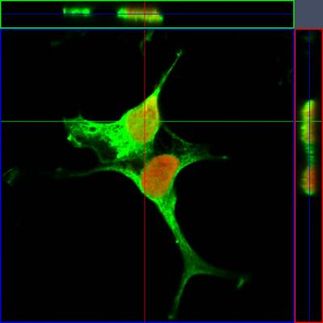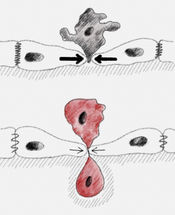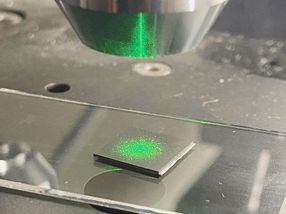Dopamine controls formation of new brain cells
A study of the salamander brain has led researchers at Karolinska Institutet in Sweden to discover a hitherto unknown function of the neurotransmitter dopamine. In an article published in the prestigious scientific journal Cell Stem Cell they show how in acting as a kind of switch for stem cells, dopamine controls the formation of new neurons in the adult brain. Their findings may one day contribute to new treatments for neurodegenerative diseases, such as Parkinson’s.
The study was conducted using salamanders which unlike mammals recover fully from a Parkinson’s-like condition within a four week period. Parkinson’s disease is a neurodegenerative disease characterised by the death of dopamine-producing cells in the mid-brain. As the salamander re-builds all lost dopamine-producing neurons, the researchers examined how the salamander brain detects the absence of these cells. This question is a fundamental one since it has not been known what causes the new formation of nerve cells and why the process ceases when the correct number have been made.
What they found out was that the salamander’s stem cells are automatically activated when the dopamine concentration drops as a result of the death of dopamine-producing neurons, meaning that the neurotransmitter acts as a constant handbrake on stem cell activity.
“The medicine often given to Parkinson’s patients is L-dopa, which is converted into dopamine in the brain,” says Dr Andras Simon, who led the study at the Department of Cell and Molecular Biology. “When the salamanders were treated with L-dopa, the production of new dopamine-producing neurons was almost completely inhibited and the animals were unable to recover. However, the converse also applies. If dopamine signalling is blocked, new neurons are born unnecessarily.”
As in mammals, the formation of neurons in the salamander mid-brain is virtually non-existent under normal circumstances. Therefore by studying the salamander, scientists can understand how the production of new nerve cells can be resumed once it has stopped, and how it can be stopped when no more neurons are needed. It is precisely in this regulation that dopamine seems to play a vital part. Many observations also suggest that similar mechanisms are active in other animal species too. Further comparative studies can shed light on how neurotransmitters control stem cells in the brain, knowledge that is of potential use in the development of therapies for neurodegenerative diseases.
“One way of trying to repair the brain in the future is to stimulate the stem cells that exist there,” says Dr Simon. “This is one of the perspectives from which our study is interesting and further work ought to be done on whether L-dopa, which is currently used in the treatment of Parkinson’s, could prevent such a process in other species, including humans. Another perspective is how medicines that block dopamine signalling and that are used for other diseases, such as psychoses, affect stem cell dynamics in the brain.”
The salamander is a tailed member of the frog family most known for its ability to regenerate lost body parts, such entire limbs.
Original publication
Anders A Berg, Matthew Kirkham, Heng Wang, Jonas Frisén & Andras Simon; 'Dopamine Controls Neurogenesis in the Adult Salamander Midbrain in Homeostasis and during Regeneration of Dopamine Neurons', Cell Stem Cell.
Most read news
Original publication
Anders A Berg, Matthew Kirkham, Heng Wang, Jonas Frisén & Andras Simon; 'Dopamine Controls Neurogenesis in the Adult Salamander Midbrain in Homeostasis and during Regeneration of Dopamine Neurons', Cell Stem Cell.
Organizations
Other news from the department science

Get the life science industry in your inbox
By submitting this form you agree that LUMITOS AG will send you the newsletter(s) selected above by email. Your data will not be passed on to third parties. Your data will be stored and processed in accordance with our data protection regulations. LUMITOS may contact you by email for the purpose of advertising or market and opinion surveys. You can revoke your consent at any time without giving reasons to LUMITOS AG, Ernst-Augustin-Str. 2, 12489 Berlin, Germany or by e-mail at revoke@lumitos.com with effect for the future. In addition, each email contains a link to unsubscribe from the corresponding newsletter.





















































